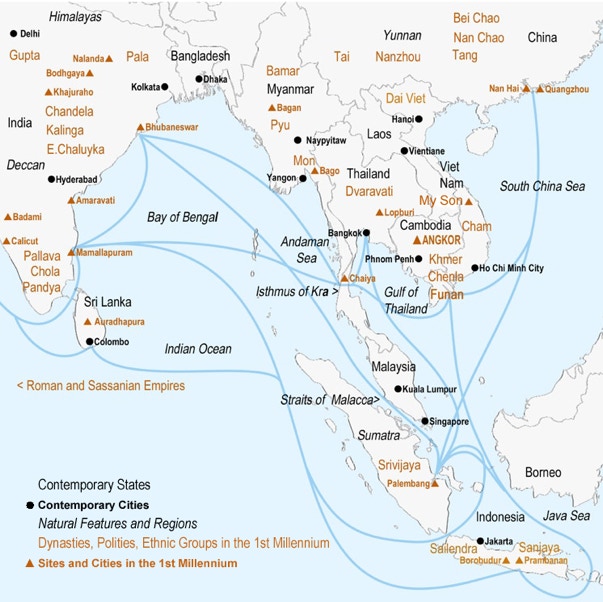I. INDIC ORIGINS:
Cultural Diffusion or Assimilation?
KAILASANATHAR TEMPLE, KACHIPURAM
TAMIL NADU, INDIA (685-705)
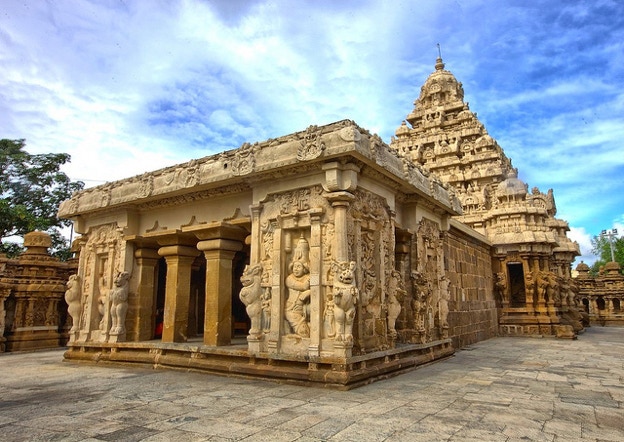
Khmer religious and architectural practices were profoundly influenced by the development of Hinduism and Buddhism on the Indian subcontinent during the centuries before and after its initial contact horizon with Southeast Asia early in the 1st Millennium C.E. Anthropologists often distinguish two modes of cultural transfer – diffusion and assimilation. The former is usually associated with conquest or colonization and characterized by an unequal power relationship between source and recipient, for example, Latinization under the Roman Empire. The latter occurs through non-coercive, therefore, selective, adoption of elements of one culture by the elites of another, as happened between Renaissance Italy and the courts of early modern Europe.
Throughout the contact period with India, Southeast Asia was part of an extensive trading network linking the Roman, Sassanian and Gupta Empires to the west with the Chinese Empire to the east. This stretched from Sri Lanka and the Coromandel Coast across the Bay of Bengal and Andaman Sea to the Pyu and Mon city states of the Ayeyarwady delta, over the Isthmus of Kra or through the Straits of Malacca to the thalassocratic Srivijaya trading empire of Sumatra and their Sailendra and Sanjaya feudatories on Java. From there, it crossed the Gulf of Thailand to the Dvaravati states of the Chao Phraya’s plain, then to the entrepots of the Mekong Delta to the east, the South China Sea and the ports of southern China, as mapped on figure. 2 (below.)
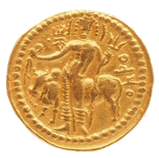
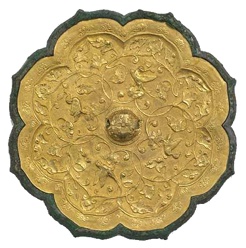
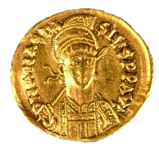
GUPTA AND ROMAN COINAGE FOUND AT
OC EO ( FUNAN)
Indian merchants presumably brought innovative religious and cultural beliefs along with new commodities to the region but there is no indication they exercised any direct political influence there. Instead, the rulers of the various polities along these shipping lanes, who profited enormously from taxing this trade, seem to have been the first to embrace these new religions along with Indian luxury goods, unlike their subjects who continued to practice animism and subsistence agriculture. They adapted those aspects of these faiths which resonated with their own social and cultural beliefs and interests, thereby reinforcing rather than challenging traditional authority. Merchant states tended to favor Buddhism which downplayed caste distinctions, while feudal nobles were attracted to Hinduism’s sanction of hereditary prerogatives, such as the Khmer devaraja cult and its celebration of kingship in the Indian epics, especially the Ramayana or Reamker in Khmer.
Austroasian-speaking Khmer ethnic groups are thought to have migrated well prior to this contact horizon from the area around Yunnan in southern China, settling along the lower reaches of the Mekong River. Chinese chronicles, our only written sources for this period, mention a coastal trading partner and tributary in that region, Funan, and, beginning in the 6th Century, an inland kingdom they called Zhenla or Chenla, which seems to have gained suzerainty over the Khmer-speaking parts of Funan. A king, Isanavarman I, ruled this polity between 600-628 C.E. from Sambor Prei Kuk, a religious complex and site of the first indisputably Khmer temples, located 146 km southeast of the future Angkor. This nascent kingdom quickly dissolved into warring city states and local dynasties until Jayavarman II (790-835) reconstituted a Khmer Empire in 802 which flourished into the 14th Century.
The transmission route of Indic culture to the Khmer remains uncertain since it is doubtful many members of this inland kingdom had direct experience of that subcontinent. It is quite possible that no one commissioning a Khmer temple during the classical period had ever seen an Indian example, except perhaps sketched on a palm frond manuscript. The epigraphic record, however, contains evidence of early Khmer contact and trade with the Buddhist Srivijaya Empire centered around Palembang in Sumatra and the Sailendra rulers of the Kedu Plain of southern Java, builders of the immense temple at Borobudur. They would also have had knowledge of the related Hindu dynasty, the Sanjayas, responsible for the religious complex at Prambanan, as confirmed by stylistic similarities with early Khmer sculpture and architecture. Therefore, Khmer knowledge of Indian architectural theory and practice would have been second-hand at best, mediated through Javanese models, which could contribute to the divergence between Indian and Khmer interpretations of the “temple mountain.”
